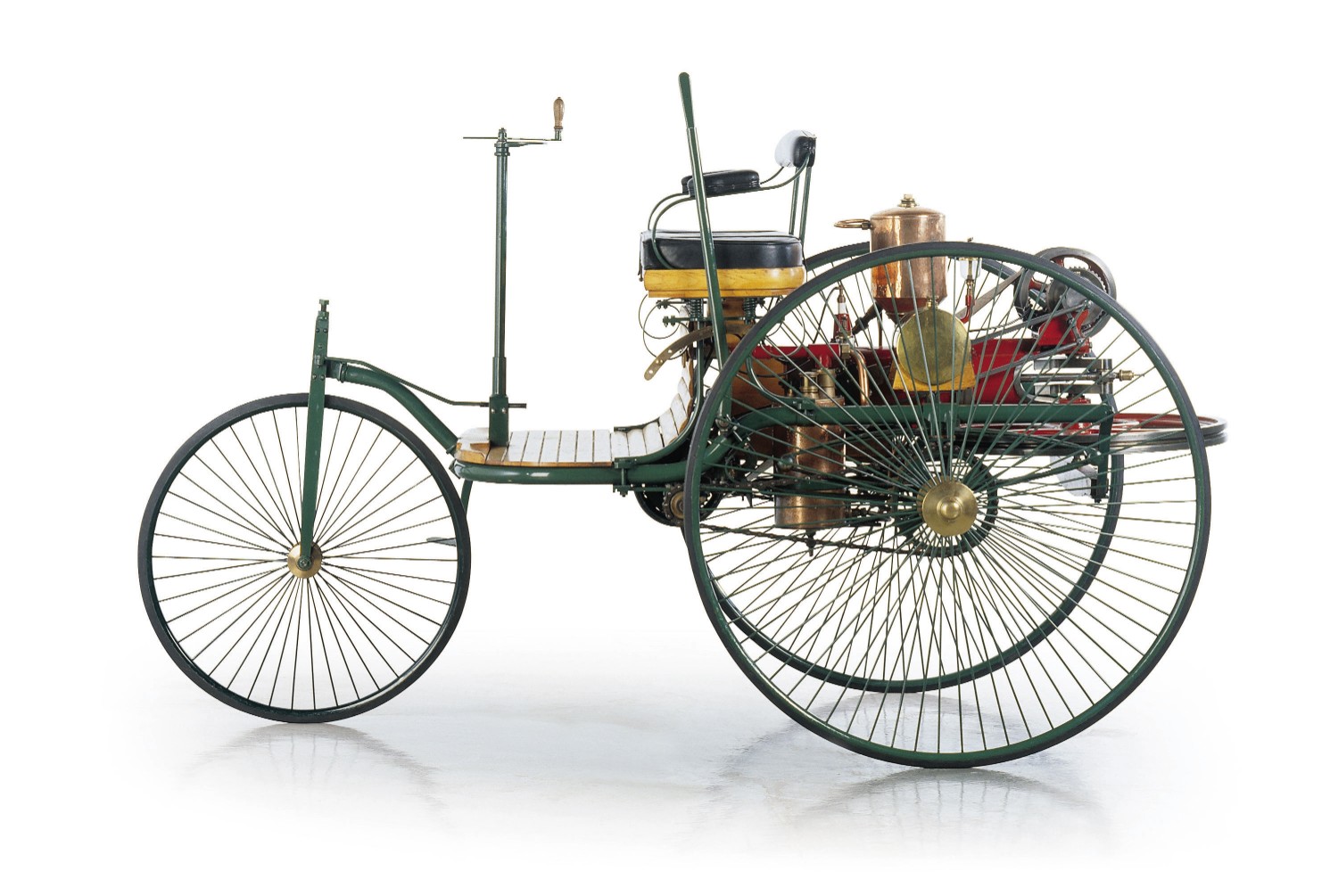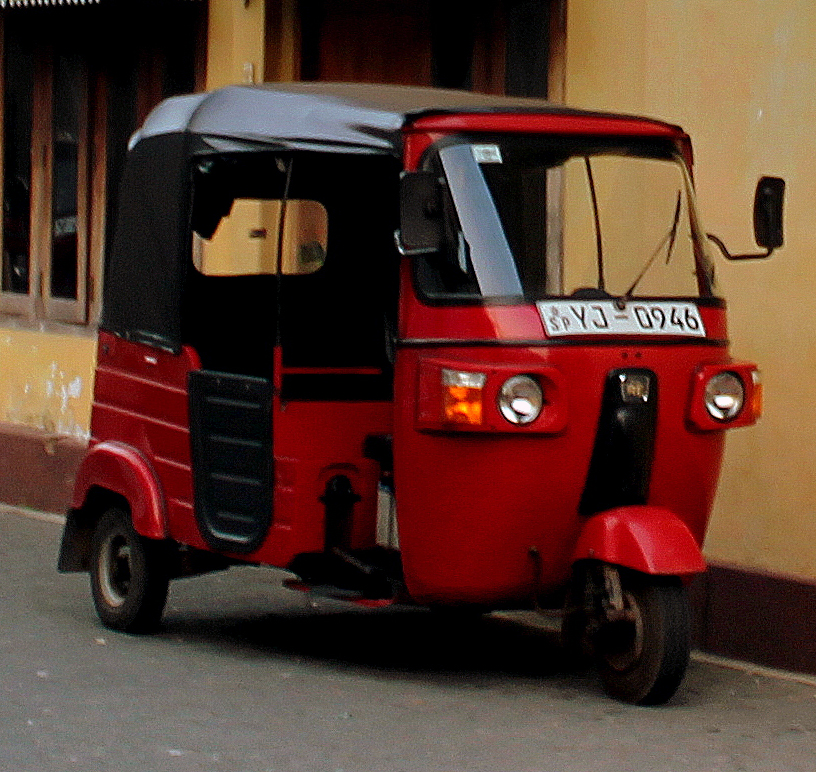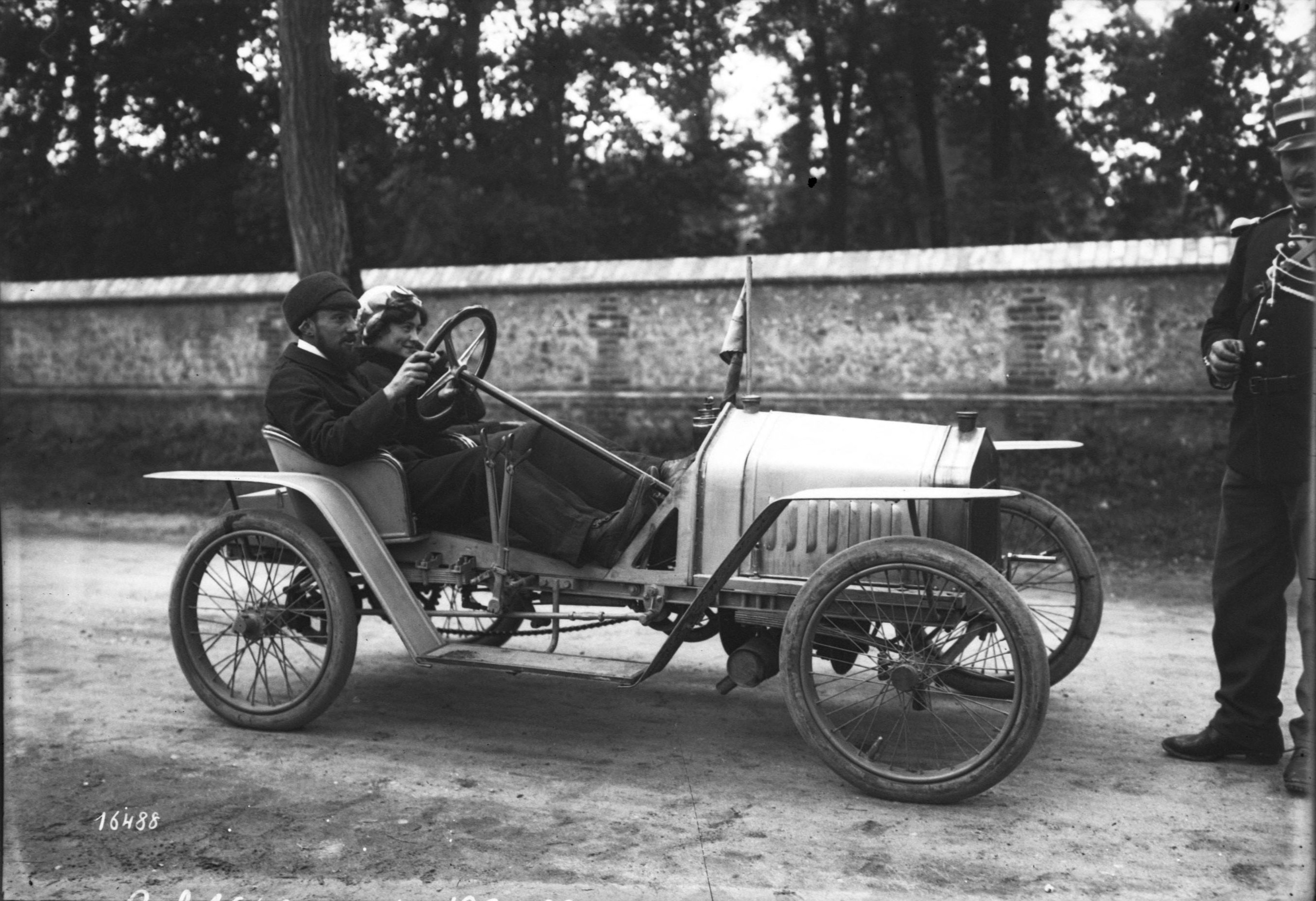|
Three-wheeled Motor Vehicles
A three-wheeler is a vehicle with three wheels. Some are motorized tricycles, which may be legally classed as motorcycles, while others are tricycles without a motor, some of which are human-powered vehicles and animal-powered vehicles. Overview Many three-wheelers which exist in the form of motorcycle-based machines are often called trikes and often have the front single wheel and mechanics similar to that of a motorcycle and the rear axle similar to that of a car. Often such vehicles are owner-constructed using a portion of a rear-engine, rear-drive Volkswagen Beetle in combination with a motorcycle front end. Other trikes include that are specially constructed for off-road use. Three-wheelers can have either one wheel at the back and two at the front (2F1R), (for example: Morgan Motor Company) or one wheel at the front and two at the back (1F2R) (such as the Reliant Robin). Due to better safety when braking, an increasingly popular form is the front-steering "tadpole" or ... [...More Info...] [...Related Items...] OR: [Wikipedia] [Google] [Baidu] |
Campagna T-Rex
The Campagna T-Rex is a two-seat, three-wheeled motor vehicle created by Campagna Motors, located in Quebec, Canada. It is powered by an in-line 6-cylinder engine from BMW. Although it used to be registered as a motorcycle, it is now largely considered a "three-wheeler". However, in some states, like Arizona, it can still be registered as a motorcycle, but not require a motorcycle endorsement. The interior can accommodate the driver and a single passenger seated side-by-side, with adjustable seat backs, a foot-pedal box, and retractable three-point seat belts. The T-Rex uses a sequential manual transmission, operated by hand with a shift lever, which is the same type of manual transmission used in motorcycles. The T-REX has been commercially available since the early 1990s. The Campagna T-REX was designed and styled by Deutschman Design. History In 1976, 1977 and 1979, Daniel Campagna was a Formula Ford racer in Quebec. He made some significant motoring inventions, including th ... [...More Info...] [...Related Items...] OR: [Wikipedia] [Google] [Baidu] |
Morgan Motor Company
The Morgan Motor Company is a British motor car manufacturer owned by Italian investment group Investindustrial. It was founded in 1910 by Henry Frederick Stanley Morgan. Morgan is based in Malvern Link, an area of Malvern, and employs approximately 220 people. Morgan produce 850 cars per year, all assembled by hand. The waiting list for a car is approximately six months, but has sometimes been as long as ten years. Morgan cars are unusual in that wood has been used in their construction for a century, and is still used in the 21st century for framing the body shell. A visitor centre and museum have exhibits about the company's history from Edwardian times until the present day, developments in automobile technology, and a display of automobiles. There are also guided tours of the factory. Company history H.F.S. Morgan quit the Great Western Railway in 1904 and co-founded a motor sales and servicing garage in Malvern Link. In 1909 he designed and built a car for his ... [...More Info...] [...Related Items...] OR: [Wikipedia] [Google] [Baidu] |
Edward Butler (inventor)
Edward Butler (1862–1940) was an English inventor who produced an early three-wheeled petrol automobile called the Butler Petrol Cycle, which is accepted by many as the first British car. Butler showed plans for his three-wheeled petrol vehicle at the Stanley Cycle Show in London in 1884, two years earlier than Karl Benz, who is generally recognized as the inventor of the modern automobile. Butler's vehicle was also the first design to be shown at the 1885 Inventions Exhibition, also in London. Butler Petrol Cycle Built by the Merryweather Fire Engine company in Greenwich, in 1888, the Butler Petrol Cycle (first recorded use of the term) G.N. Georgano, p.22. was a three-wheeled petrol vehicle. The rear wheel was directly driven by a 5/8hp (466W) 600 cc (40 in3; 2¼×5-inch ) flat twin four-stroke engine (with magneto ignition replaced by coil and battery), equipped with rotary valves and a float-fed carburettor (five years before Maybach), and Ackermann steering, G.N. Georga ... [...More Info...] [...Related Items...] OR: [Wikipedia] [Google] [Baidu] |
The Great Exhibition
The Great Exhibition of the Works of Industry of All Nations, also known as the Great Exhibition or the Crystal Palace Exhibition (in reference to the temporary structure in which it was held), was an international exhibition which took place in Hyde Park, London, from 1 May to 15 October, 1851. It was the first in a series of World's Fairs, exhibitions of culture and industry that became popular in the 19th century. The event was organised by Henry Cole and Prince Albert, husband of Victoria, Queen of the United Kingdom. Famous people of the time attended the Great Exhibition, including Charles Darwin, Karl Marx, Michael Faraday (who assisted with the planning and judging of exhibits), Samuel Colt, members of the Orléanist Royal Family and the writers Charlotte Brontë, Charles Dickens, Lewis Carroll, George Eliot, Alfred Tennyson and William Makepeace Thackeray. The opening music, under the superintendence of William Sterndale Bennett, was directed by Sir George Sma ... [...More Info...] [...Related Items...] OR: [Wikipedia] [Google] [Baidu] |
John Henry Knight (inventor)
John Henry Knight (21 January 1847 – 22 September 1917), from Farnham, was a wealthy engineer, landowner and inventor. With the help of the engineer George Parfitt he built one of Britain's first petrol-powered motor vehicles, Frederick Bremer of Walthamstow having built the first in 1892. On 17 October 1895, with his assistant James Pullinger, they drove through Farnham, Surrey, whereupon he was prosecuted for using a locomotive with neither a licence nor a man walking in front with a red flag. This is sometimes misreported as the first person to be convicted of speeding in the UK, but that sobriquet subsequently fell to Walter Arnold of East Peckham, Kent, in January 1896. Knight was both an inventor and pioneer, having created a (failed) steam powered road vehicle; a renowned steam powered hop digger; a heat saving radiator; a brick laying machine; a grenade thrower, a speedometer, wooden vehicle tyres, and a patent 'dish lever' for tilting plates when carving meat. Knigh ... [...More Info...] [...Related Items...] OR: [Wikipedia] [Google] [Baidu] |
Benz Patent Motorwagen
The Benz Patent-Motorwagen ("patent motorcar"), built in 1885 by the German Carl Benz, is widely regarded as the world's first practical modern automobile and was the first car put into series production. It was patented and unveiled in 1886. The original cost of the vehicle in 1886 was 600 imperial German marks, approximately 150 US dollars (). Karl's wife Bertha demonstrated its feasibility in a trip from Mannheim to Pforzheim in August 1888, shortly before it became the first commercially available automobile in history in the late summer of 1888. Due to the creation of the Patent-Motorwagen, Benz has been hailed as the father and inventor of the automobile. Development and specifications After developing a successful gasoline-powered two-stroke piston engine in 1873, Benz focused on developing a motorized vehicle while maintaining a career as a designer and manufacturer of stationary engines and their associated parts. The Benz Patent-Motorwagen was a motor tricycle w ... [...More Info...] [...Related Items...] OR: [Wikipedia] [Google] [Baidu] |
Karl Benz
Carl Friedrich Benz (; 25 November 1844 – 4 April 1929), sometimes also Karl Friedrich Benz, was a German engine designer and automotive engineer. His Benz Patent Motorcar from 1885 is considered the first practical modern automobile and first car put into series production. He received a patent for the motorcar in 1886. His company Benz & Cie., based in Mannheim, was the world's first automobile plant and largest of its day. In 1926 it merged with Daimler Motoren Gesellschaft to form Daimler-Benz which produces the Mercedes-Benz among other brands. Benz is widely regarded as "the father of the car" and "father of the automobile industry". Early life Carl Benz was born Karl Friedrich Michael Vaillant, on 25 November 1844 in Mühlburg, now a borough of Karlsruhe, Baden-Württemberg, which is part of modern Germany. His parents were Josephine Vaillant and a locomotive driver, Johann Georg Benz, whom she married a few months later. According to German law, the child acquired ... [...More Info...] [...Related Items...] OR: [Wikipedia] [Google] [Baidu] |
Auto Rickshaw (Philippines)
Motorized tricycles, or simply tricycles (Filipino: ''traysikel''; Cebuano: ''traysikol''), is a type of motorized vehicle from the Philippines consisting of a motorcycle attached to a passenger cab. Along with the jeepney, it is one of the most common means of public or private transportation in the Philippines, especially in rural areas. These public utility vehicles either ply a set route or are for-hire, like taxis. Tricycles are built in a variety of styles, which differ from city to city, and are usually made locally by building a sidecar and affixing it to an imported motorcycle. Usually both the cycle and sidecar are covered, but not always by the same roof. Larger companies, such as Fitcor Marketing, also manufacture passenger tricycles. They are built with more seats with the motor situated at the back, rather than below the driver as per a motorcycle. Tricycles are often confused with the similar tuktuks and auto rickshaws of neighboring countries. But tricycles evo ... [...More Info...] [...Related Items...] OR: [Wikipedia] [Google] [Baidu] |
Auto Rickshaw
An auto rickshaw is a motorized version of the pulled rickshaw or cycle rickshaw. Most have three wheels and do not tilt. They are known by many terms in various countries including auto, auto rickshaw, baby taxi, mototaxi, pigeon, jonnybee, bajaj, chand gari, lapa, tuk-tuk, tum-tum, Keke-napep, Maruwa, 3wheel, pragya, bao-bao, easy bike, cng and tukxi. The auto rickshaw is a common form of urban transport, both as a vehicle for hire and for private use, in many countries around the world. They are especially common in countries with tropical or subtropical climates, since they usually are not fully enclosed, and in many developing countries because they are relatively inexpensive to own and operate. As of 2019, Bajaj Auto of India is the world's largest auto rickshaw manufacturer, selling 780,000 during the 2019 fiscal year. There are many different auto rickshaw designs. The most common type is characterized by a sheet-metal body or open frame resting on three wheels; a canvas ... [...More Info...] [...Related Items...] OR: [Wikipedia] [Google] [Baidu] |
Microcar
Microcar is a term often used for the smallest size of cars, with three or four wheels and often an engine smaller than . Specific types of microcars include bubble cars, cycle cars, invacar, quadricycles and voiturettes. Microcars are often covered by separate regulations to normal cars, having relaxed requirements for registration and licensing. Predecessors Voiturette is a term used by some small cars and tricycles manufactured from 1895 to 1910. Cyclecars are a type of small, lightweight and inexpensive car manufactured mainly between 1910 and the late 1920s. Europe 1940-1970: Microcars The first cars to be described as microcars (earlier equivalents were called voiturettes or cyclecars) were built in the United Kingdom and Germany following World War II, and remained popular until the 1960s. They were originally called minicars, but later became known as microcars. France also produced large numbers of similar tiny vehicles called voiturettes, but they were rar ... [...More Info...] [...Related Items...] OR: [Wikipedia] [Google] [Baidu] |
Bubble Car
Microcar is a term often used for the smallest size of cars, with three or four wheels and often an engine smaller than . Specific types of microcars include bubble cars, cycle cars, invacar, quadricycles and voiturettes. Microcars are often covered by separate regulations to normal cars, having relaxed requirements for registration and licensing. Predecessors Voiturette is a term used by some small cars and tricycles manufactured from 1895 to 1910. Cyclecars are a type of small, lightweight and inexpensive car manufactured mainly between 1910 and the late 1920s. Europe 1940-1970: Microcars The first cars to be described as microcars (earlier equivalents were called voiturettes or cyclecars) were built in the United Kingdom and Germany following World War II, and remained popular until the 1960s. They were originally called minicars, but later became known as microcars. France also produced large numbers of similar tiny vehicles called voiturettes, but they were rar ... [...More Info...] [...Related Items...] OR: [Wikipedia] [Google] [Baidu] |
Cyclecar
A cyclecar was a type of small, lightweight and inexpensive car manufactured in Europe and the United States between 1910 and the early 1920s. The purpose of cyclecars was to fill a gap in the market between the motorcycle and the car. A key characteristic was that it could only accommodate two passengers sitting tandem style or passenger behind the driver. The demise of cyclecars was due to larger cars – such as the Citroën Type C, Austin 7 and Morris Cowley – becoming more affordable. Small, inexpensive vehicles reappeared after World War II, and were known as microcars. Characteristics Cyclecars were propelled by engines with a single cylinder or V-twin configuration (or occasionally a four cylinder engine), which were often air-cooled. Sometimes motorcycle engines were used, in which case the motorcycle gearbox was also used. All cyclecars were required to have clutches and variable gears. This requirement could be fulfilled by even the simplest devices su ... [...More Info...] [...Related Items...] OR: [Wikipedia] [Google] [Baidu] |
.jpg)




.jpg)

